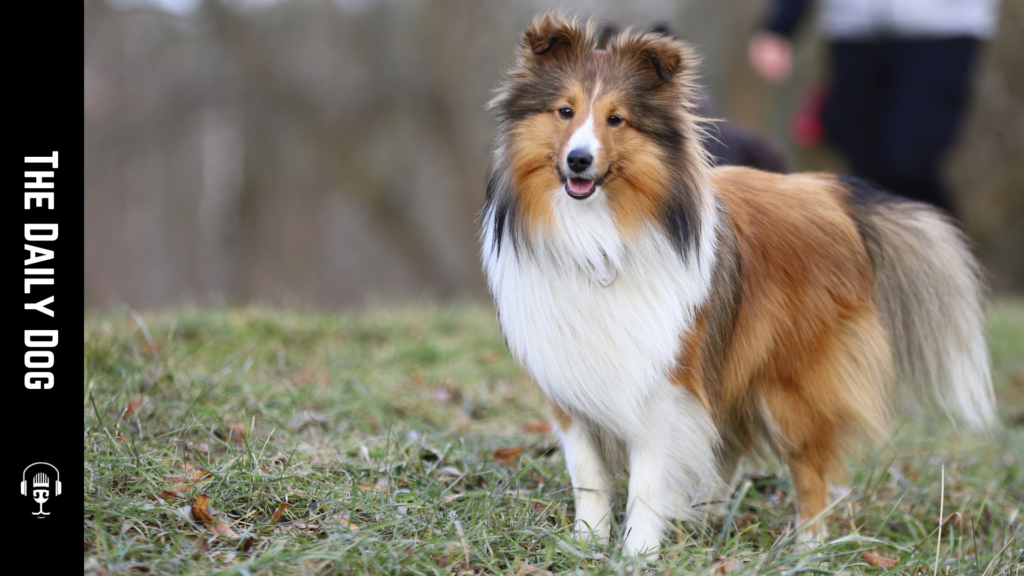The Shetland Sheepdog, affectionately known as the Sheltie, is a beloved breed known for its intelligence, agility, and loyalty. Originally bred for herding sheep in the rugged Shetland Islands of Scotland, these dogs are not just working animals; they are also cherished family companions. In this article, we’ll explore the Shetland Sheepdog’s history, characteristics, care requirements, and why they make exceptional pets.
History of the Shetland Sheepdog
The Shetland Sheepdog‘s roots trace back to the early 1900s in the Shetland Islands. These dogs were primarily bred to assist farmers in herding sheep, protecting them from predators, and managing livestock. The breed is believed to be a mix of the Collie and smaller local breeds. Their keen intelligence and strong work ethic made them invaluable on the farms.
In 1909, the Shetland Sheepdog was officially recognized by the British Kennel Club, and its popularity has only grown since then. Today, the breed is celebrated not only for its herding skills but also for its charming personality and versatility in various dog sports.
Physical Characteristics
The Shetland Sheepdog is a small to medium-sized dog with a well-proportioned body. Here are some defining physical traits:
- Size: Shelties typically stand between 13 to 16 inches tall at the shoulder and weigh around 20 to 40 pounds.
- Coat: Their double coat consists of a soft, dense undercoat and a long, straight outer coat. Common colors include sable, black, merle, and tri-color.
- Eyes: Shelties have expressive, almond-shaped eyes that can be brown or blue, depending on their coat color.
- Ears: Their ears are triangular and can be either erect or semi-erect, adding to their alert appearance.
Temperament
Shetland Sheepdogs are known for their friendly, intelligent, and affectionate nature. They are highly trainable and eager to please, making them excellent companions for families and individuals alike. Here are some key personality traits:
- Intelligent: Shelties are among the smartest dog breeds, excelling in obedience training and dog sports.
- Loyal: They form strong bonds with their families and are protective of their loved ones.
- Energetic: With a high energy level, Shelties require regular exercise and mental stimulation to stay happy and healthy.
- Social: They are generally good with children and other pets, although early socialization is essential.
Care Requirements
1. Nutrition
A balanced diet is crucial for the health of your Shetland Sheepdog. Choose high-quality dog food that meets their specific nutritional needs. Consult your veterinarian for guidance on portion sizes and feeding schedules, which typically involve two meals per day.
2. Exercise
Shetland Sheepdogs are active dogs that require regular exercise. Daily walks, playtime, and mental challenges like obedience training or puzzle toys are essential to keep them physically and mentally stimulated. Aim for at least 30 to 60 minutes of exercise each day.
3. Grooming
Due to their thick double coat, Shelties require regular grooming to prevent matting and reduce shedding. Brush their coat at least once a week, increasing to several times a week during shedding season. Regular baths will help keep their coat clean and healthy.
4. Health Care
Routine veterinary check-ups are essential for maintaining your Sheltie’s health. Common health issues to watch for include hip dysplasia, eye problems, and certain genetic conditions. Keeping up with vaccinations, flea and tick prevention, and dental care will also contribute to a long, healthy life.
Training Tips
Training a Shetland Sheepdog can be a rewarding experience due to their eagerness to learn. Here are some effective training tips:
- Start Early: Begin training and socialization as early as possible to help your Sheltie develop good manners and adaptability.
- Use Positive Reinforcement: Reward your dog with treats, praise, and play for desired behaviors. This approach fosters a positive learning environment.
- Be Consistent: Consistency in commands and routines helps your Sheltie understand expectations.
- Incorporate Variety: Keep training sessions engaging by varying activities and introducing new commands or tricks.
- Socialize: Expose your Sheltie to different environments, people, and other animals to build confidence and reduce anxiety.
The Shetland Sheepdog in Dog Sports
Shetland Sheepdogs excel in various dog sports, thanks to their agility, intelligence, and willingness to work. Here are some popular activities for Shelties:
- Agility: Their speed and agility make them outstanding competitors in agility courses.
- Obedience: Shelties often shine in obedience competitions, showcasing their ability to follow commands and perform tasks with precision.
Herding Trials: True to their roots, Shetland Sheepdogs can participate in herding trials, demonstrating their natural instincts and skills in managing livestock.
Flyball: This fast-paced relay race is a great way for Shelties to burn off energy while having fun with their human companions.
Canine Freestyle: Shelties can also excel in canine freestyle, a sport that combines obedience and dance, allowing them to showcase their intelligence and bond with their owners.
Pros and Cons of Owning a Shetland Sheepdog
Pros
Intelligent and Trainable: Shelties are highly trainable, making them suitable for both novice and experienced dog owners.
Great Family Dogs: Their friendly and social nature makes them excellent companions for families with children.
Versatile: Shelties can excel in various activities, from obedience to agility, making them suitable for active households.
Protective: They are naturally protective, making them good watchdogs for the home.
Affectionate: Shelties are known for their loyalty and affection, forming strong bonds with their families.
Cons
High Energy: They require regular exercise and mental stimulation, which may not suit all lifestyles.
Grooming Needs: Their thick double coat requires regular grooming to prevent matting and reduce shedding.
Separation Anxiety: Shelties can be prone to separation anxiety if left alone for long periods, so they thrive in homes where someone is present most of the time.
Barking: They can be vocal, which may be a concern for some owners, especially in apartment settings.
Conclusion
The Shetland Sheepdog is a remarkable breed that combines intelligence, agility, and a loving disposition, making them a fantastic choice for families and individuals alike. Their rich history as herding dogs, combined with their versatility in various dog sports, highlights their adaptability and skill. With the right care, training, and socialization, a Sheltie can become a cherished member of your family, bringing joy and companionship for many years. If you’re considering adding a Shetland Sheepdog to your household, be prepared for a rewarding journey filled with love, loyalty, and plenty of tail-wagging adventures.
FAQs about Shetland Sheepdogs
1. How long do Shetland Sheepdogs live?
The average lifespan of a Shetland Sheepdog is around 12 to 14 years, but with proper care and a healthy lifestyle, some can live even longer.
2. Do Shetland Sheepdogs shed a lot?
Yes, Shetland Sheepdogs do shed, especially during seasonal changes. Regular grooming can help manage shedding.
3. Are Shetland Sheepdogs good with children?
Absolutely! Shelties are known for their gentle and affectionate nature, making them great companions for children.
4. How much exercise do Shetland Sheepdogs need?
Shetland Sheepdogs need at least 30 to 60 minutes of exercise daily, including walks, playtime, and mental stimulation.
5. Are Shetland Sheepdogs easy to train?
Yes, due to their intelligence and eagerness to please, Shetland Sheepdogs are generally easy to train, especially with positive reinforcement methods.
By understanding the unique traits and needs of the Shetland Sheepdog, potential owners can better appreciate this delightful breed and ensure a happy, fulfilling life for their furry friends. Whether you’re looking for a loyal companion, an agile sports partner, or a loving family member, the Shetland Sheepdog is sure to win your heart.







